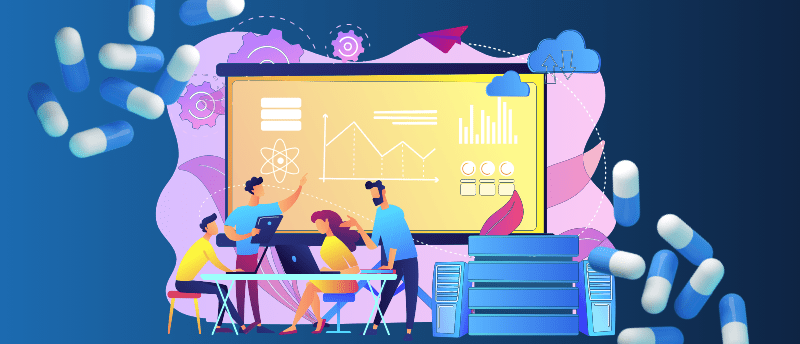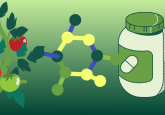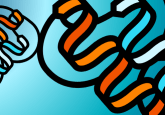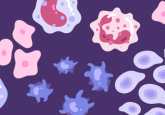What’s coming up at ELRIG Drug Discovery 2024?

This year’s ELRIG Drug Discovery conference is taking place at ExCeL in London (UK) from 2–3 October 2024. The free-to-attend event is the largest drug discovery conference in Europe, bringing together researchers and industry professionals to accelerate drug discovery. There are multiple tracks for the two-day event, from mechanisms of aging and cell and gene therapy to target identification and disease modeling.
With only 2 days, ten tracks and several excellent presentations, there’s a lot to look out for. Here, I’ve highlighted just a few of the intriguing talks; I’m only sad I can’t be in two places at once!
Our top picks for ELRIG Drug Discovery 2024
Wednesday, 2 October
Affinity selection-mass spectrometry: enabling high-throughput target engagement assays for hit identification
12:10–12:40 in Auditorium 1 (Track: Advances in assay development and screening)
In this presentation, Research Scientist at Boehringer Ingelheim (Dresden, Germany), Yuting Wang will discuss the target engagement assay that she and colleagues have developed to aid the hit identification and confirmation process. This assay utilizes affinity selection-mass spectrometry (AS-MS) by combining MALDI-TOF MS with an in-plate 384-well size exclusion chromatography. The label-free method has successfully been employed to detect a range of chemically diverse compounds.
A planet fit for cancer research: a funder’s role in delivering environmentally sustainable science
12:10–12:40 in the Tech Theater (Track: Raising the Bar: Mainstreaming sustainability and ethical research practices in drug discovery)
In the Tech Theater, Cancer Research UK’s (London, UK) funding policy and governance manager, Mathew Tata, will share his thoughts on how we can make research more environmentally sustainable. From designing experiments to analyzing data, the demand research places on resources is vast, not to mention the waste, emissions and biodiversity erosion. That’s why funding organizations are assessing how they can fund and encourage greener research. In this talk, we will learn about the steps already being taken to create this greener cultural shift in research funding as well as the challenges that inevitably follow more sustainable practices.
Enabling therapeutic responses in solid tumors through engineered live biotherapeutics
14:00–14:30 in Auditorium 2 (Track: Translating ideas into therapies)
CEO of Neobe Therapeutics (Cambridge, UK) Pedro Correa de Sampaio will walk us through how he and his colleagues are using engineered live biotherapeutics to address the challenges associated with treating solid tumors. They built a synthetic biology platform, based on safe, tumor-colonizing bacterial strains, that combines genetic circuit libraries of tumor-inducible biosensors, extracellular matrix remodeling enzymatic payloads and associated secretion systems into bacterial therapeutic vectors programmed to remove fibrotic barriers to therapeutic efficacy in solid tumors.
Thursday, 3 October
Cell Painting to accelerate drug discovery: finding disease phenotypes, candidate therapeutics, and mechanisms using images
11:05–11:35 in Auditorium 1 (Track: Impacts of biomolecular imaging and informatics in drug discovery)
Did you know that there is a method that allows for the extraction of hundreds of cellular features from microscopy images? Anne Carpenter, Institute Scientist at the Broad Institute of MIT and Harvard (MA, USA), has developed an image-based profiling method – often using the Cell Painting assay – that allows her team to compare the patterns of extracted cellular features, revealing connections among diseases, genes and drugs. In this presentation, we will hear about what this method can reveal about disease on a cellular and molecular level.
Applying ML/AI to drug design
14:00–14:30 in Auditorium 4 (Track: Chemistry in drug discovery: innovation, collaboration and inspiration)
There’s no question about the impact AI has had on the life sciences, just look at AlphaFold. Now, Ola Engkvist – Executive Director at AstraZeneca (Cambridge, UK) – takes us on a tour of drug design from AI’s perspective. Focusing on deep learning-based molecular de novo design, synthesis prediction, molecular property prediction and chemistry automation, this talk delves deep into the role that AI has in drug design.
Establishing and reverting disease-like signatures with high content imaging
14:00–14:30 in Auditorium 1 (Track: Impacts of biomolecular imaging and informatics in drug discovery)
High-content imaging is a key technique in drug discovery. In this presentation from Steffen Jaensch – Principal Scientist at Johnson & Johnson (NJ, USA) – we will learn how he and colleagues have developed an AI/ML-driven high-content imaging platform that makes small molecule discovery more efficient. Not only will we learn about the platform itself, but we’ll also gain an insight into this platform’s applications.
Patients in a dish: using a patient-derived organoid biobank to investigate disease mechanisms and drug targets in inflammatory bowel disease
14:45–15:15 in Auditorium 2 (Track: Target discovery and disease modeling)
In this talk, Research Associate Thomas Dennison (Milner Therapeutics Institute, University of Cambridge, UK) will discuss the use of a patient-derived organoid biobank to investigate disease mechanisms and drug targets in inflammatory bowel disease (IBD). Their biobank is composed of 312 intestinal epithelial organoid lines from individuals with IBD and control individuals. Using genome-wide DNA methylation profiling, CRISPR/Cas9 screening and high-content imaging are just a few of the techniques that have illuminated more about IBD mechanisms and possible drug targets.
Will you be attending ELRIG Drug Discovery? Are you interested in discussing your research with BioTechniques? Email [email protected] to set up a conversation!




